Safety Signs and Symbols: Meanings & Uses in the Workplace

Workplace safety is crucial to success, particularly in dangerous industries like construction. Many organizations now combine clear signage with digital tools such as work safety software to enhance hazard communication, track compliance, and ensure real-time monitoring of safety practices. These visual symbols warn workers of potential danger and ensure a safer environment for all.
In this article, we’ll explore and define what safety signs and symbols are. We’ll also give a quick overview of their importance in international workplace safety standards and compliance (OSHA, ISO, ANSI, etc.).
What Are Safety Signs and Symbols?
Signs and symbols are color-coded images used to communicate messages. They are designed to prevent workplace accidents, injuries, and illnesses.
In workplaces like construction and manufacturing, workers are regularly exposed to hazards. On top of that, civilians passing through areas can be exposed to these hazards if they’re not careful.
Safety signs are designed to transcend language barriers while being helpful for workers not familiar with an area or process. They are also intended to be remembered more vividly while reducing the viewer’s cognitive load.
What are the Different Types of Safety Signs?

Signage and symbols come in different colors, shapes, and sizes to convey potential hazards and necessary procedures.
Understanding what these signs and symbols say helps avoid accidents in the workplace. These are the different types of signs and symbols used for workplace safety:
1. Prohibition Signs
These signs intend to communicate that something is not allowed in a specific area. They are placed to prevent behaviors that could pose risks to individual workers, the area, and its general occupants.
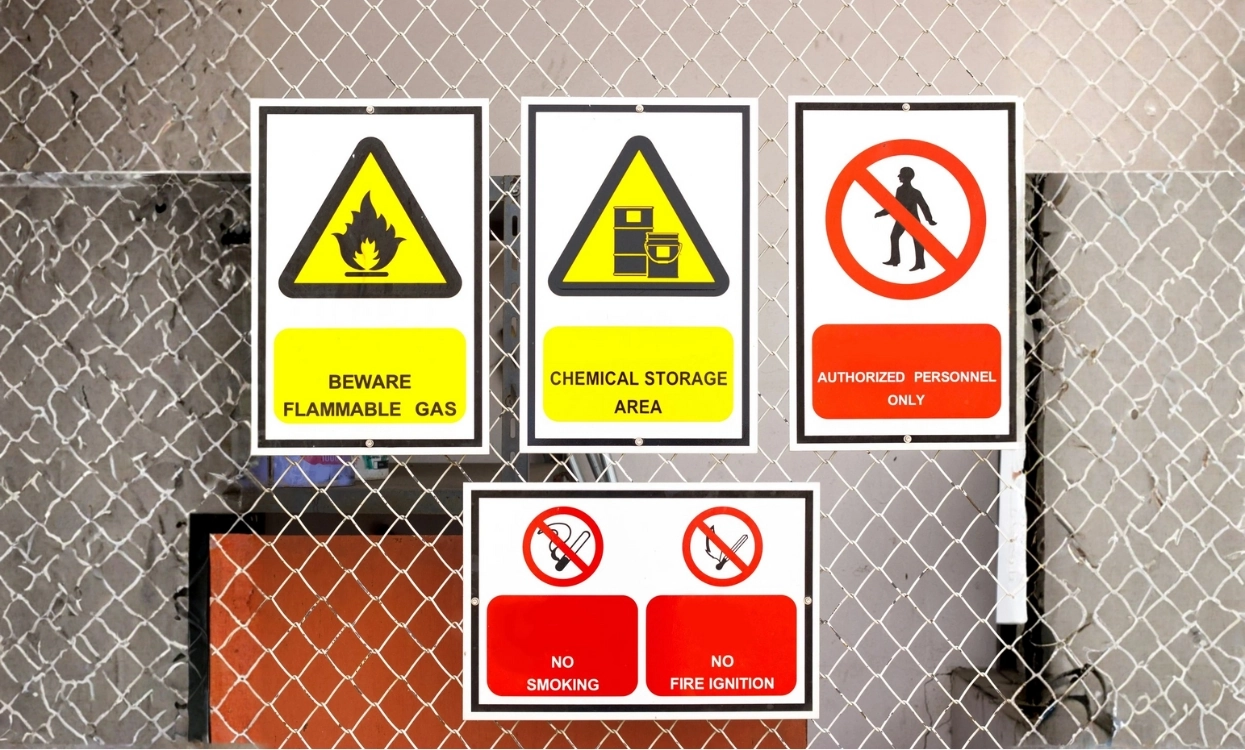
No Smoking: Indicates that smoking is not allowed in the area.
No Open Flames: Prohibits the use of open flames, such as lighters or matches.
No Entry: Restricts access to a specific area.
No Pedestrians: Indicates that pedestrians are not allowed in the area.
Do Not Drink: Specifies that the water or liquid is not safe for consumption.
No Mobile Phones: Prohibits the use of mobile phones in the area.
2. Mandatory Signs
Mandatory safety signs indicate actions workers must do to maintain safety in the area. They are often circular and have a blue background with a white symbol.
Wear Safety Helmet: Requires individuals to wear a safety helmet.
Wear Eye Protection: Mandates the use of eye protection, such as safety glasses or goggles.
Wear Ear Protection: Requires individuals to wear ear protection, such as earplugs or earmuffs.
Wear Safety Shoes: Mandates the use of safety shoes or boots.
Wear Gloves: Requires individuals to wear gloves.
Use Handrail: Mandates the use of handrails when using stairs or walkways.
Wash Your Hands: Requires individuals to wash their hands.
3. Warning Signs
Warning signs are triangular, with a yellow background, a black border and symbol. They warn of potential dangers in the area.

General Warning: Indicates a general hazard that is not specifically covered by other warning signs.
Electrical Hazard: Warns of the presence of electrical hazards, such as high voltage.
Flammable Material: Alerts to the presence of flammable substances.
Toxic Material: Indicates the presence of toxic or poisonous substances.
Biohazard: Warns of biological hazards, such as infectious agents.
Laser Beam: Alerts to the presence of laser beams.
4. Emergency Signs
Emergency signs show where emergency exits, escape routes, and first aid kits are located. They are placed near exits to ensure people know where to leave the area or treat injuries in an emergency. Every company should have an emergency action plan. This planning is crucial for ensuring the safety of employees during emergencies and minimizing potential losses. Furthermore, it helps organizations respond effectively, maintain business continuity, and comply with legal regulations.
Emergency Exit: Indicates the location of an emergency exit.
First Aid: Identifies the location of a first aid station or kit.
Emergency Telephone: Indicates the location of an emergency telephone.
Fire Extinguisher: Identifies the location of a fire extinguisher.
Emergency Shower: Indicates the location of an emergency shower.
Eye Wash Station: Identifies the location of an eye wash station.
Assembly Point: Indicates the designated assembly point in case of an emergency.
5. Fire Safety Signs
These signs indicate fire fighting equipment and fire exits. These allow people to extinguish fires or leave the area in the event of one. They are rectangular or square with red backgrounds and white symbols.

Fire Safety Signs: These signs provide information about fire safety equipment, procedures, and hazards.
Chemical Safety Signs: These signs provide information about the safe handling, storage, and disposal of chemicals.
Construction Safety Signs: These signs provide information about safety hazards and precautions on construction sites.
Traffic Safety Signs: These signs provide information about traffic regulations, hazards, and directions.
What Are Common Safety Symbols and Their Meanings?
Safety and warning signs and symbols are set by the ISO Standard 72424 or 7010 (the international standard) to ensure they are recognizable. When viewed, these signs and symbols are understood by people regardless of their language and culture. Here are a few examples of the most commonly used and recognized safety and warning signs around the world:
1. Live Electrical Equipment
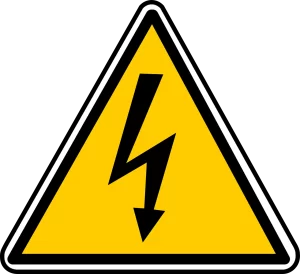
This symbol is displayed in areas where powerful electrical equipment is located, which indicates the risk of electric shock. A similar lightning symbol pointing to the side indicates that “arc flashes” are a present risk in the area.
2. No Smoking
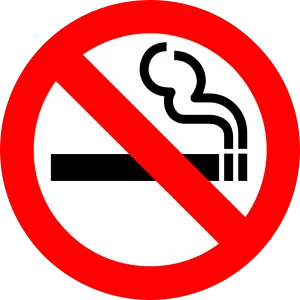
This fire safety symbol is one of the most recognized symbols in the world, and it is used to denote places where smoking is prohibited.
In workplace settings, cigarettes, lighters, and other smoking implements are ignition sources. These can risk an open flame in areas with potentially flammable atmospheres for materials.
3. Hot Surface

This signage indicates that the surface is hot and is meant to prevent workers from getting burned. It is posted near cooktops, ovens, other appliances, and surfaces like machine casings and piping.
4. Fire Exit/Emergency Exit
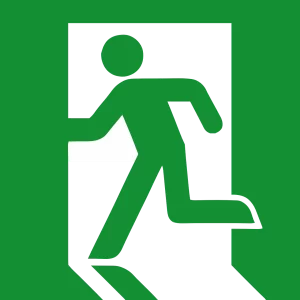
Fire or emergency exit signs indicate where to leave a building or area in an emergency. These signs are illuminated to be visible even when dark or smoke fills the area.
5. Ionizing Radiation
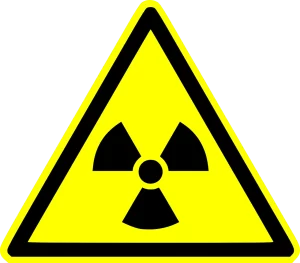
Ionizing radiation poses a significant hazard that can cause severe cell damage and radiation sickness to those exposed. This sign is posted in areas where this can be a risk, particularly in laboratories and factories.
What are the Workplace Applications of Safety Signs?
Safety and well-being are crucial in any workplace, but this is especially true for those with particular safety hazards.

For instance, in industries like construction, healthcare, and manufacturing, safety and warning signs are required. They must be visibly placed near areas with heavy, delicate, or dangerous equipment.
Here are the ways safety and warning signs are used in different industries:
1. Compliance
Safety signages help ensure compliance with regulations, standards, and guidelines at all levels. Companies often face fines for violations or not meeting established safety requirements. Using audit management software alongside workplace safety compliance software enables organizations to monitor inspections, document findings, and verify that safety signage and procedures meet ISO, OSHA, and ANSI standards.
Here are the ways safety and warning signs are used in different industries:
- OSHA – Known as the Occupational Health and Safety Administration, OSHA sets guidelines for ensuring safe working conditions.
- ANSI – Another regulatory body is the American National Standards Institute, a nonprofit group that sets frameworks for developing standards and quality assessment.
- ISO – The ISO (International Organization for Standardization) sets guidelines and standards for food safety, healthcare, and more. Key standards include ISO 9001 for quality management, ISO 14001 for environmental management, and ISO 45001 for occupational health and safety management.
2. Emergency Preparedness
Clear communication is vital during emergencies. Safety and warning signs and symbols convey clear information on emergency exits, evacuation routes, etc.
They also convey where vital equipment, like fire extinguishers, hoses, and first aid, is located. With the help of these signages, workers can act decisively during emergencies.
3. Prohibitions
Safety is crucial in industries like manufacturing, particularly where exposure to dangerous chemicals is likely. Clear, visible signage can prevent many workplace accidents and injuries.
Certain items that can risk workplace accidents, such as smoking, are often prohibited in these settings. Signage that forbids these items should be posted near the entrance or at a visible area.
4. Hazard Communication
Safety symbols in the workplace communicate and identify hazards in the workplace. These hazards can range from slippery floors to high-voltage areas.
By marking hazardous areas, companies encourage workers and visitors to exercise caution and follow safety procedures. As a result, accidents and injuries are less likely to happen.
5. Education
Safety and warning signage is also educational, particularly within a manufacturing or engineering context.
Proper signage is concise and communicates information at a glance. It helps ensure workers, especially new hires, are guided appropriately on corporate standard practices.
What is the Psychology Behind Safety Symbols?
Safety and warning signage must meet several criteria to ensure workplace safety. They must also be placed in a prominent area (not obscured) and as eye-catching as possible.

These signages work because of two primary elements: color and shape. Once they grab the viewer’s attention, the symbols in the center become more easily understood.
Here is the meaning behind the color and shape of safety signs and symbols in the workplace;
1. Color Meanings
These signages work because of two primary elements: color and shape. Once they grab the viewer’s attention, the symbols in the center become more easily understood.
Here is the meaning behind the color and shape of safety signs and symbols in the workplace;
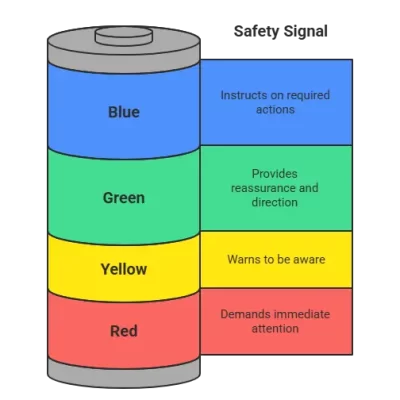
Red: Often associated with danger, warning, and urgency. It’s highly attention-grabbing and commonly used for symbols indicating immediate threats (e.g., fire hazards, stop signs).
Yellow: Typically signifies caution or potential hazards. It’s less alarming than red but still serves as a warning to be aware and take precautions (e.g., slippery floors, electrical hazards).
Green: Usually indicates safety, escape routes, or first aid. It provides reassurance and guidance in emergency situations (e.g., emergency exits, first aid stations).
Blue: Often used for mandatory actions or information. It instructs people on what they must do (e.g., wear safety goggles, wash hands).
2. Shape Meanings
Like colors, shapes also convey meaning in the context of safety. Here is a quick guide on what the shapes in safety signage mean:
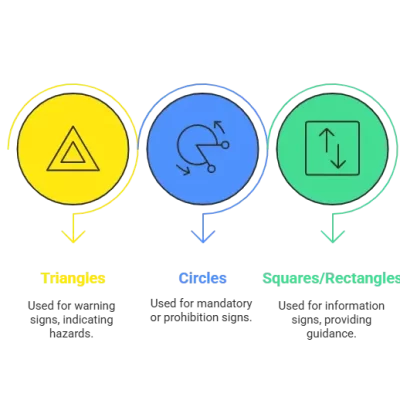
Triangles: Typically used for warning signs. The triangular shape itself acts as a visual cue to pay attention to a potential hazard.
Circles: Often used for mandatory signs (blue circles) or prohibition signs (red circles with a diagonal line).
Squares/Rectangles: Commonly used for information signs, providing general guidance or instructions.
3. Symbols Meanings
In the language of safety signage, symbol safety signs are enclosed within shapes. These symbols are the best way to convey information quickly in a way that is universally understood. Here are a few of the most common symbols:
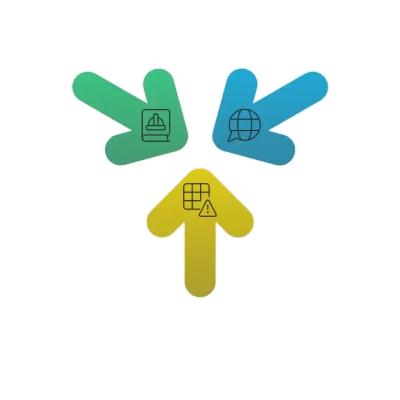
- Skull and crossbones – A skull and crossbones warn workers of the area’s immediate toxic or deadly hazards. These can be chemicals (e.g., pesticides) or a high risk of electric shock.
- Exclamation mark – Like the skull and crossbones, an exclamation mark is used to warn workers of potential risks ahead. Those entering the area are urged to exercise caution.
- Arrows – Arrows indicate direction or movement. In the context of safety signage, arrows guide people towards exits or safe areas during emergencies.
- Cross – The cross is another universally understood safety sign that indicates first aid or medical help. This symbol ensures quick access to necessary care during medical emergencies.
- Flame – Flame stands for fire or flammable materials. This symbol is used prominently in areas with likely fire hazards and encourages viewers to exercise caution.
- Hard hat – The hard hat symbol is commonly used in construction sites to signify the need for personal protective equipment. More specifically, hard hats are needed to protect against head injuries.
The Bottom Line
Clear signage has a drastic impact on workplace safety and efficiency. It exists to make it easier for workers to identify potential hazards in the shortest possible time.
That said, safety signs also need to be visible and placed in areas where they are easily seen. They should be adequately spaced to avoid overwhelming viewers with information. Lastly, this kind of signage only works if everyone understands it, which is why companies often need to conduct regular refresher training.
To further strengthen safety programs, organizations can integrate work safety software to monitor signage updates, manage training schedules, and ensure ongoing compliance with workplace safety standards.
Protect your workforce and keep your safety systems up to date with reliable work safety software.
Recent Blogs
Frequently Asked Questions
Safety signs are visual indicators used to warn, instruct, or guide individuals about potential hazards, required actions, or emergency information in the workplace or public areas.
The purpose of safety signs is to reduce accidents and injuries by clearly communicating warnings, mandatory actions, and emergency instructions to workers and visitors.
Each safety sign has a standardized color and shape combination. For example, red circles for prohibition, yellow triangles for warning, blue circles for mandatory, and green rectangles for emergency signs.
ISO 7010 focuses on international visual symbols, while OSHA signs follow U.S. regulations with text-based messages and color codes as outlined in ANSI Z535.
The four main types are:
-
Prohibition signs – indicate forbidden actions
-
Mandatory signs – show required actions
-
Warning signs – highlight potential hazards
-
Emergency signs – point to safety equipment or exits






